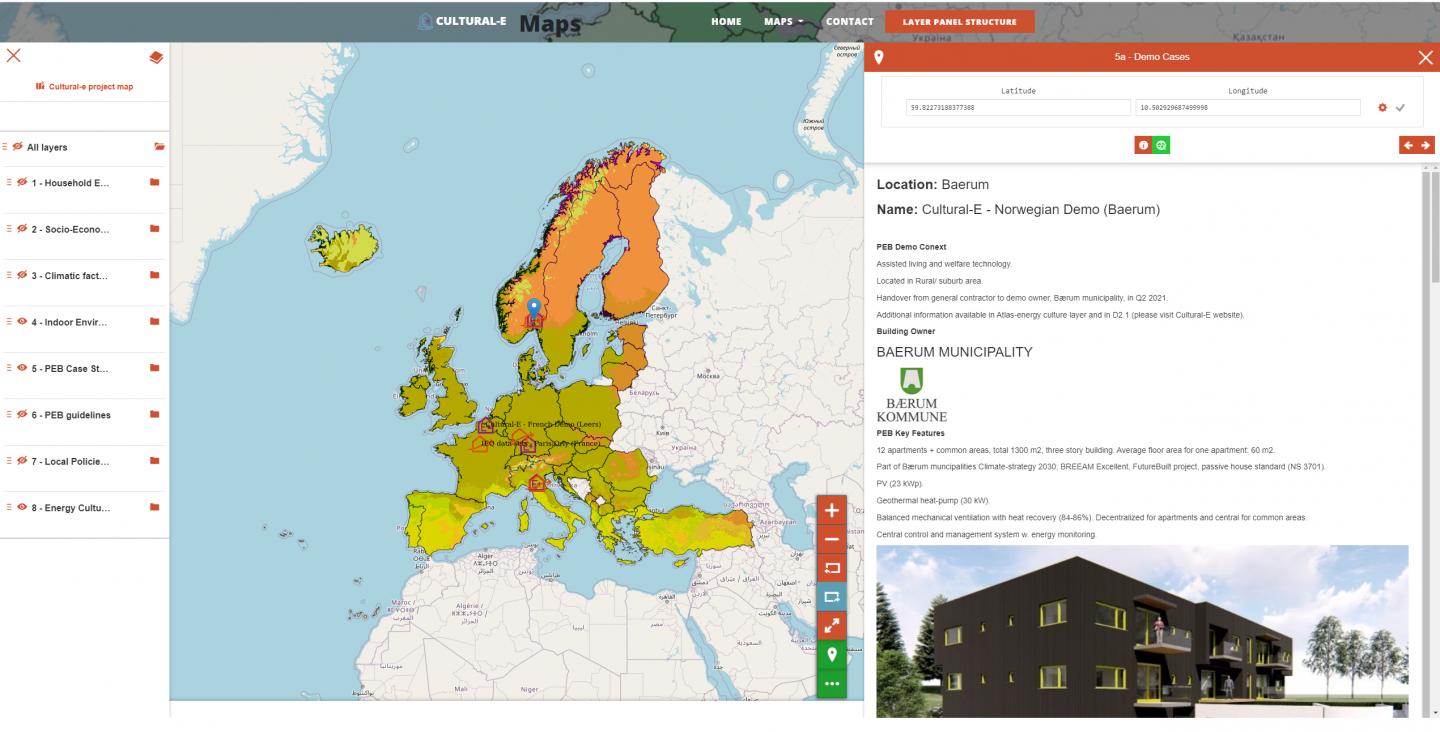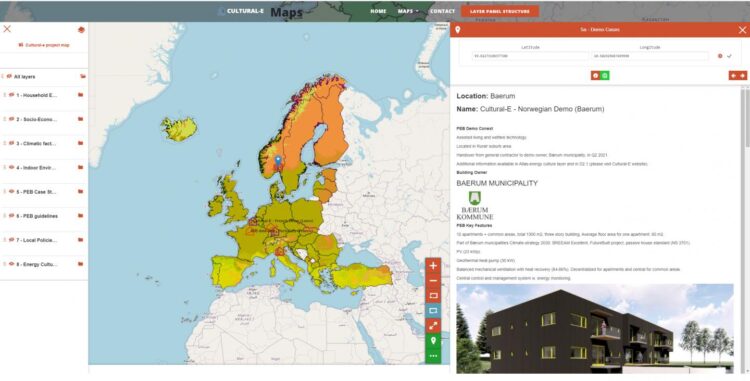Mapping culture and climatic energy drivers in Europe

Credit: Cultural-E project
Researchers from RMIT University, Eurac Research and University Ca’ Foscari Venezia have launched an innovative GIS map with a difference: The European Climate and Cultural Atlas for Plus Energy Building Design – the 2CAP-Energy Atlas.
The Atlas has been developed as part of the Cultural-E project which is funded by the European Union’s Horizon 2020 research and innovation programme.
The research focuses on Plus Energy Buildings (PEBs) – those which produce a surplus of energy thanks to renewable sources – and aims to show how culture and climate can influence the type and intensity of energy practices.
Now the project team is inviting feedback from the PEB community on the beta version of the Atlas.
The new platform, which combines expertise from the social sciences and building engineering, is expected to deliver insights to help building professionals to achieve more successful PEB design.
By combining knowledge from case studies, relevant building policy and real designer experiences, the team has created an interactive, layered GIS map of Europe to assist building professionals using real data from occupied buildings and Cultural-E’s demo sites.
To develop the Atlas, the researchers also interviewed PEB building designers in four different European Union climatic areas.
“Through these discussions we collected valuable experiences and insights into PEB practices and identified some of the challenges to achieving a successful PEB design,” said RMIT Europe researcher Iván Luque Segura.
“Interestingly, the designers also revealed how cultural habits, such as showering, laundry or cooking practices, socio-economic factors and different climates can impact upon a building’s energy balance.”
The Atlas combines this first-hand knowledge with scientific data through analytical maps, data layers and interactive graphics – allowing the user to cross-reference and compare different content and parameters, such as climate patterns and cultural behaviours.
“You might expect less of an energy demand for household cooling in the milder parts of Europe, but in this aspect, we can see through the maps that there is actually an upward trend,” said Luque Segura.
“This could be a reflection on what people in northern or central Europe perceive to be a comfortable indoor environment – this kind of insight can influence changes in building design to avoid overheating, for example, and therefore the need to waste energy.”
Available for free (under registration), the online tool is expected to see market uptake by 2030 and impact upon future building design.
“We hope the Atlas becomes a useful guide for the PEB community by providing resources to allow designers to integrate household and practice diversity to come up with different sets of conditions according to specific profiles,” said Professor Ralph Horne from RMIT University’s College of Design and Social Context.
The PEB community is invited to visit the Atlas website to experience the tool first-hand and provide their valuable feedback to the Cultural-E research team to support the continuous development of the initiative.
###
Media Contact
Hannah Tribe
[email protected]
Original Source
https:/





